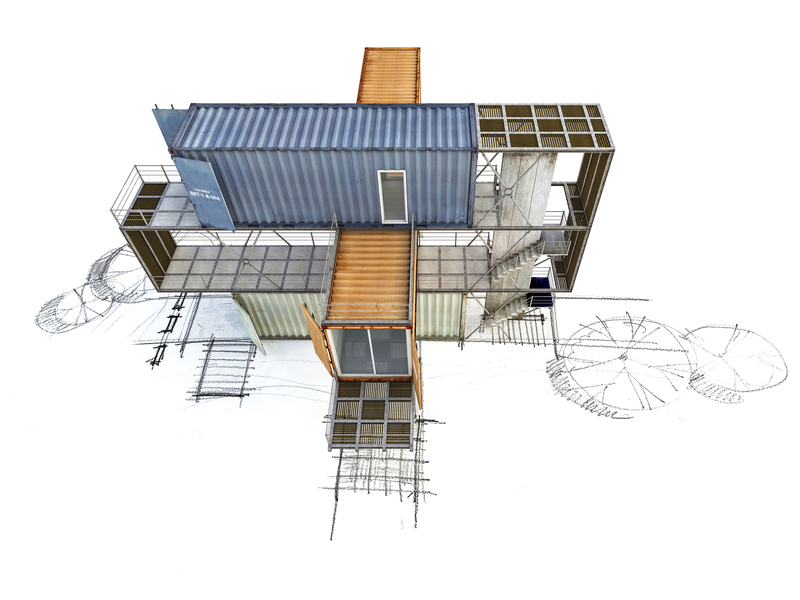Maximize Efficiency: Tactics for Office Organization
Is your workspace causing unnecessary stress or slowing down your productivity? Effective office organization is a game changer that can help you maximize efficiency, minimize distractions, and create a work environment that encourages creativity and focus. In this comprehensive guide, we reveal a range of office organization strategies designed to maximize efficiency, boost productivity, and streamline your workflow. Explore actionable tactics for modern offices, home workspaces, and corporate environments alike.

Why Office Organization Matters for Maximizing Efficiency
Cluttered workspaces don't just look untidy--they directly impact your ability to focus and perform. When you prioritize office organization, you're laying the foundation for efficient work, improved morale, and a stress-reduced atmosphere. Here's why organizing your office is essential for efficiency:
- Reduces Time Wasted: Quickly find documents and tools you need.
- Boosts Productivity: Spend more time on important work, less time searching for items.
- Enhances Focus: A tidy workspace limits distractions and helps maintain concentration.
- Supports Professionalism: An organized office makes strong impressions on clients and colleagues.
- Improves Well-being: Clean spaces can reduce stress and promote a sense of achievement and calm.
Ready to transform your work environment? Let's look at proven tactics for office organization that will help you maximize efficiency every day.
Step 1: Declutter and Prioritize
The Power of a Clean Slate
When embarking on any office organization project, the first step is decluttering. Removing unused or outdated items from your workspace impacts both mental clarity and productivity. The process can be summarized as follows:
- Remove Everything: Empty your desk, drawers, and shelves. Assess each item's usefulness.
- Sort and Categorize: Create piles: Keep, Discard, Donate, or Relocate.
- Prioritize Essentials: Only return items you use regularly or that are essential for your role.
Tip: If you haven't used something in over a month, consider if you really need it in your work area.
Step 2: Organize Your Desk and Workstation
Optimizing Desk Space for Maximum Efficiency
Your desk is the heart of your workspace. Properly organizing it can increase both efficiency and comfort.
- Adopt the "One-Touch" Rule: Handle papers and files once, either by completing the task, filing, or tossing them.
- Invest in Storage Solutions: Drawer dividers, stacked paper trays, and file organizers keep items sorted and accessible.
- Keep Frequently-Used Items Within Reach: Arrange essential tools (pens, phone, planner, etc.) in your immediate space.
- Minimize Desktop Clutter: Limit visible items to those used daily, reducing distractions and freeing up space for actual work.
Remember: A neat and organized desk can significantly maximize efficiency by removing both physical and mental obstacles to productivity.
Step 3: Implement Functional Filing Systems
Paperwork Organization for the Modern Office
Paperwork can quickly pile up, leading to chaos and inefficiency. A solid system is key for managing hard copies and digital files.
- Digital First: Whenever possible, digitize documents to minimize paper clutter. Use cloud storage for accessibility and security.
- Label Everything: Use clear, consistent naming conventions for folders, files, and labels.
- Create Zones: Organize filing cabinets or digital folders by project, client, or department.
- Maintain Regularly: Schedule weekly reviews to file recent documents and discard unnecessary papers.
Efficient filing systems ensure you never waste time hunting for that important document again, directly contributing to increased office efficiency.
Step 4: Streamline Digital Workspaces
Digital Organization for Maximized Efficiency
With remote work and online collaboration, digital clutter is as detrimental as physical clutter. Here's how to organize your digital office:
- Inbox Zero: Regularly review and categorize emails. Unsubscribe from irrelevant lists and archive old messages.
- Consistent Folder Structure: Mirror your physical filing system in your computer for easy navigation.
- Cloud Tools: Use tools like Google Drive, Dropbox, or OneDrive to centralize files and enable seamless team access.
- Routine Backups: Schedule weekly or automated backups to protect against data loss.
Tip: Use descriptive file names and dates for easy search and retrieval, further maximizing efficiency in your office organization.
Step 5: Harness Technology and Automation
Organizational Tools that Maximize Efficiency
Modern offices benefit from a wide array of technological tools designed to automate and simplify everyday tasks. Here are some popular solutions to improve organization and efficiency:
- Task Management Apps: Use apps like Trello, Asana, or Monday.com for transparent project management and team collaboration.
- Calendar Integration: Sync meetings and deadlines across devices with Google Calendar or Outlook.
- Automated Workflows: Use tools like Zapier to connect apps and automate routine processes (e.g., saving email attachments to specific folders).
- Password Managers: Organize and secure login credentials for streamlined access and peace of mind.
These digital solutions don't just promote office organization, but actively maximize efficiency by saving time and reducing administrative burdens.
Step 6: Design Your Office for Performance
Layout and Ergonomics Matter
Efficient office organization extends beyond storage and filing; it includes the very layout and feel of your space. Key tactics include:
- Optimize Traffic Flow: Arrange furniture to minimize obstructions and make movement easy.
- Ergonomic Furniture: Invest in adjustable chairs, proper desk heights, and monitor stands to support posture and reduce fatigue.
- Lighting: Use natural light where possible, supplemented by quality task lighting.
- Incorporate Plants: Greenery can boost energy, filter air, and enhance your mood.
- Create Zones: Designate specific areas for focused work, collaboration, and relaxation.
Workplaces designed with intention and office efficiency in mind encourage sustained productivity and well-being.
Step 7: Maintain and Continuously Improve
Consistency Is Key for Office Organization
Efficient office organization isn't a one-time task but an ongoing commitment. Here's how to keep your workspace efficient and organized over the long haul:
- Daily Clean-Up: Take a few minutes at the end of each day to clear your desk and reset your workspace.
- Weekly Audits: Review files and supplies to remove or reorganize as needed.
- Annual Overhauls: Once a year, do a deep clean and reassess your organizational systems for improvements.
- Solicit Feedback: If you work in a team, ask for input on what can be refined or updated in shared spaces.
Regular maintenance ensures that your efforts to maximize efficiency through office organization don't go to waste.
Step 8: Encourage Organizational Culture
Get Everyone on Board
Long-lasting office efficiency is achieved when everyone participates in maintaining an organized environment. You can foster a culture of organization by:
- Setting Expectations: Communicate clear guidelines about office cleanliness and organization.
- Providing Training: Educate team members on best practices and use of organizational tools.
- Lead by Example: Model organized habits and make regular check-ins part of your workflow.
- Recognize Efforts: Reward organized behavior and efficient systems within teams.
When organizational values become part of company culture, efficiency isn't just possible--it becomes inevitable.
Innovative Strategies for Next-Level Office Organization
- Activity-Based Workspaces: Provide different zones for varied tasks--quiet corners for deep work, collaborative areas for team projects.
- Color-Coding Systems: Use color to easily spot files, supplies, or even digital folders.
- Modular Furniture: Embrace adaptable furniture systems for changing needs and improved space utilization.
- Smart Office Gadgets: Leverage label makers, smart sensors, and digital assistants to keep everything in check.
- Minimalist Design: Adopt a "less-is-more" philosophy, ensuring every item serves a clear purpose.
Common Office Organization Pitfalls to Avoid
Even the best intentions can go awry without a solid plan. Avoid these frequent mistakes as you maximize office efficiency:
- Overcomplicating Systems: Simple organization is best--don't create intricate filing or storage that no one uses.
- Ignoring Digital Clutter: Keep virtual spaces as organized as physical ones.
- Postponing Maintenance: Made a mess during a busy day? Always clean up before it becomes overwhelming.
- Forgetting Personal Needs: Organization should suit your working style--one size does not fit all.

Conclusion: Unlock Your Potential with Office Organization
Maximizing efficiency through office organization is more than just making your workspace look nice. It's about designing systems, routines, and environments that help you (and your team) thrive. By decluttering, implementing functional systems, harnessing digital tools, and fostering a culture of organization, you can unlock higher productivity, clearer thinking, and greater job satisfaction.
Start applying these tactics for organized offices today--whether you're at home or in a bustling workplace. With commitment and the right strategies, you will see how streamlined, optimized organization fuels better results and a more positive work experience.
Frequently Asked Questions: Maximize Efficiency and Office Organization
1. What is the fastest way to organize my office?
Begin with a rapid decluttering session, removing non-essential items and then implementing a simple filing system. Prioritize daily maintenance over deep but infrequent cleanings.
2. How often should I reorganize my office?
Regular maintenance--daily and weekly--is ideal. Schedule a full reorganization at least once a year to ensure your systems still support your workflow.
3. What digital tools do you recommend to maximize efficiency?
Consider project management tools (Trello, Asana), cloud storage solutions (Google Drive, Dropbox), and automation utilities (Zapier). For email, use features like labels, priority inbox, and rules for effective sorting.
4. Can office organization improve my mental health?
Absolutely! An orderly environment reduces cognitive overload, lowers stress, and contributes to a calm and focused mind.
Efficient office organization is an ongoing journey. Maximize your efficiency today by implementing these proven tactics and turn your workspace into a catalyst for success!